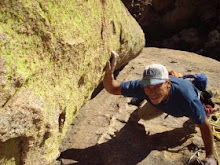Refugee Tin Shack Palace
The main feature of passive solar is from collecting and storing heat for comfort, so two parts, greenhouse panels or plastic form an essential part, and for a refugee camp, dirt for thermal mass.

Taking a standard 3ftx8ft panel for walls, a 7-1/2ft wall section with a 3ft opening to a matching wall section to be built with a planter by cutting 5 panels into 3ft & 5ft sections to make an "L" shaped cross section with a lot of mass down low, the upper wall 18" wide.
With a open floor width from the planter to the base of the greenhouse wall is 9ft, the roof overhang to adjust seasonal gain by latitude & climate, made from 12ft panels, 7 side panels 8ft tall finish the core, material for doors, vents.

That's 19-3ftx8ft tin-panels plus 8ftx18ft of greenhouse wall, 6-3ftx12ft roofing panels for a core living unit that has 6ft of width at full height and 3ft more to the base of the greenhouse wall allowing sleeping to fit without taking too much from the active space, so, 12ftx18ft overall. The east-facing side can be clear panels to help morning warming.
The north side represents the cold sink, where a cistern and storage can be, this side is optional so not drawn in. Since ramming dirt for walls is semi-permanent, it grounds the tin for stormy weather, adds quiet, drapes can insulate fairly well.
This will allow the residents to maintain comfort zone by adjusting gain & ventilation, greenhouse glazing can be stapled clear plastic or standard plastic panels, if plastic using trellis slats to tack it down with 16" spans or less stands up to winds well. the design supports year-round growing, indoor wood fires for cooking, cisterns to hold water are the pits from getting the soil, rain-water caught by the roof siphoned to them to reduce external living needs.
It's hard to say how a place can be sited, generally facing SE to SSE is best, this warms early in the day across the planters, shading the afternoon sun is better for most climates.
Most passive solar are for large buildings, this a mere 216-sf and will be cozy for a small family which can be built by hand without power tools if need be. Using as little energy to provide comfort takes a priority in how materials are used, hopefully the design concepts will be adopted by people having the tin shack to rebuild what they have.


0 Comments:
Post a Comment
<< Home